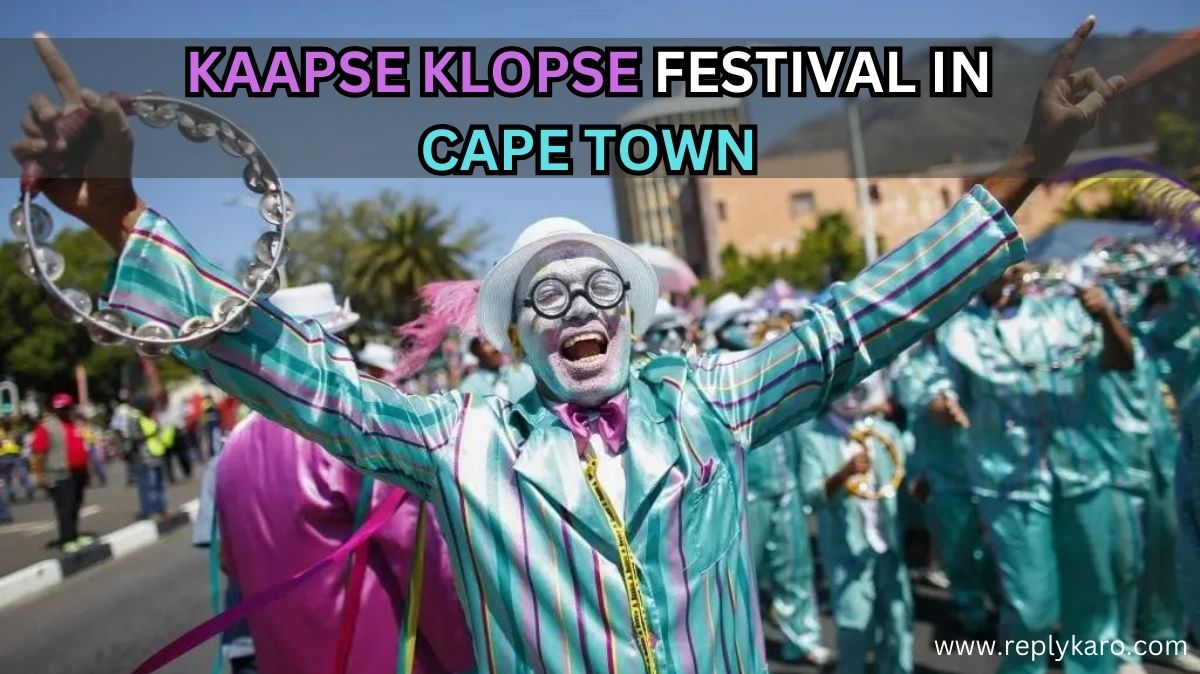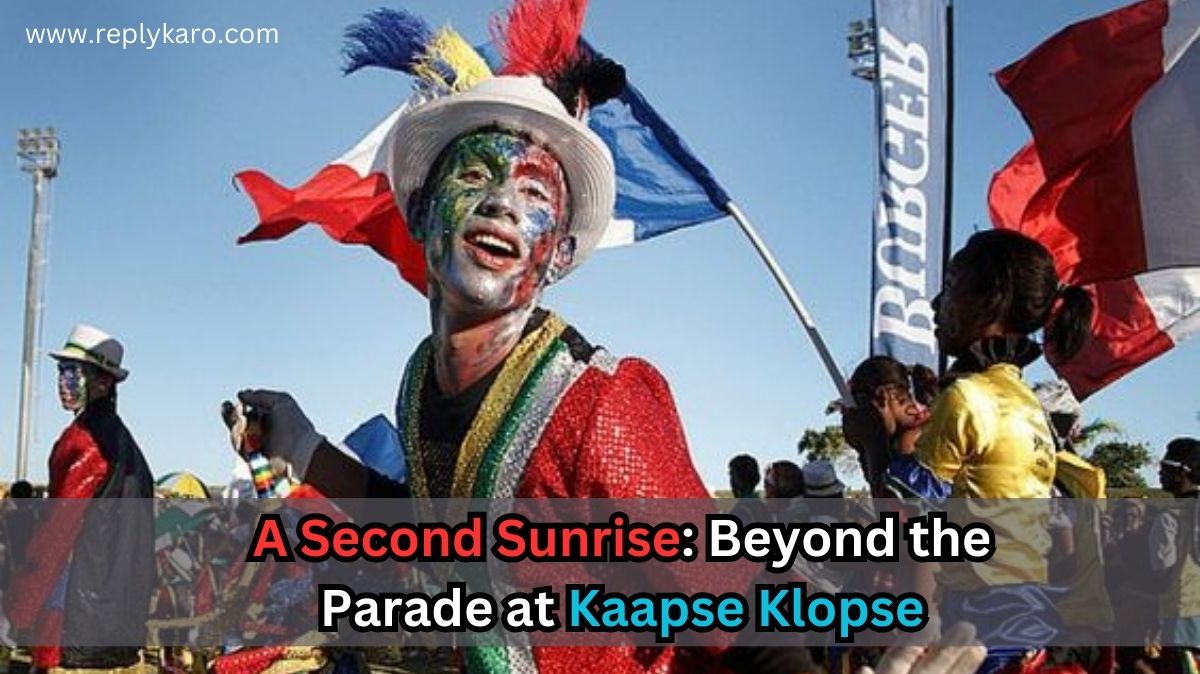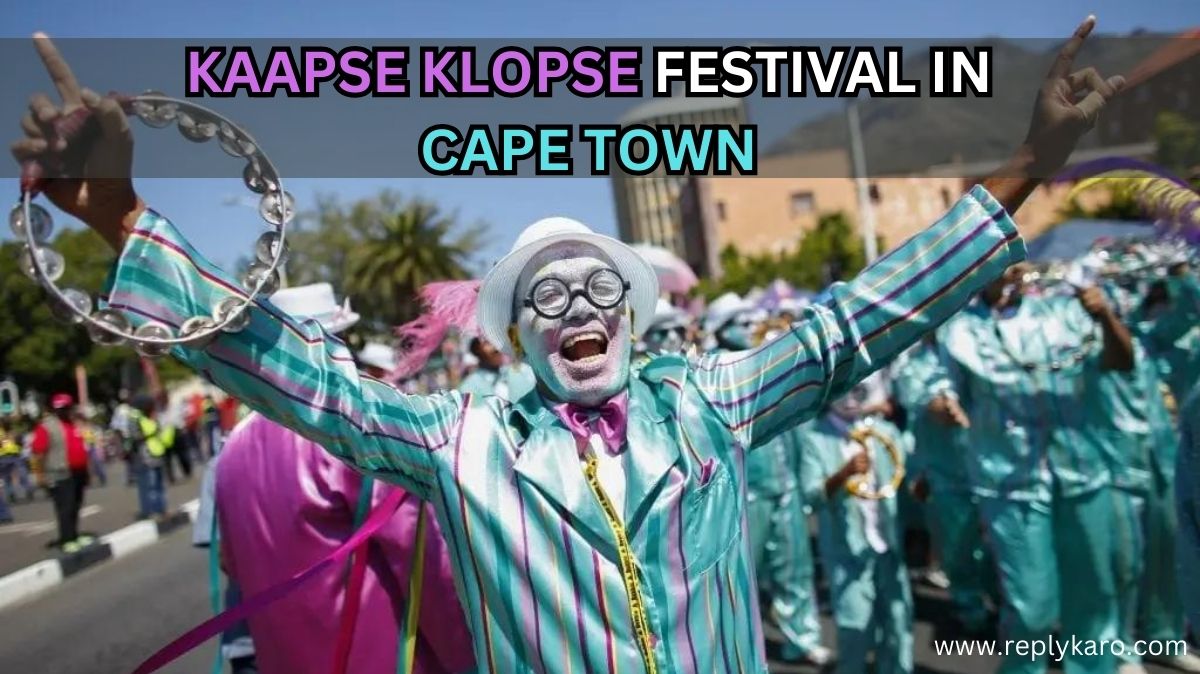
[Cape Town] explodes into a kaleidoscope of color and sound on January 2nd each year, marking the joyous occasion of the Kaapse Klopse festival. Also known as Tweede Nuwe Jaar (Second New Year), this vibrant celebration is more than just a party; it’s a vibrant tapestry woven from history, community, and the indomitable spirit of the Cape Coloured people.
Roots Reaching Back in Time:
The Kaapse Klopse has its origins in the mid-19th century, a time when enslaved people were granted a single day of respite on January 2nd. These early celebrations were infused with elements of Malay, Indian, and European musical traditions, forming the unique gumboot and ghoema drum rhythms that still resonate today. As emancipation arrived, the festival evolved, becoming a platform for self-expression and cultural defiance during the oppressive years of Apartheid.
A Celebration of Flamboyance and Tradition:
The heart of the Kaapse Klopse lies in the “klopse” themselves – close-knit troupes of performers who dedicate months to crafting their dazzling costumes and perfecting their routines. Sequins shimmer, feathers sway, and vibrant colors leap off the streets as thousands of minstrels parade through the city. Each troupe boasts its own signature style, drawing inspiration from everything from Bollywood to military uniforms, with a healthy dose of local flair.
Beyond the Parade: A Tapestry of Culture
While the parade is the crown jewel of the Kaapse Klopse, the festivities extend far beyond the main event. Choral competitions held at the Athlone Stadium showcase the vocal prowess of the klopse, while street vendors tempt taste buds with traditional Cape Malay treats like boebertjies and samoosas. The air buzzes with a sense of camaraderie and shared pride, as families and friends come together to celebrate their heritage and revel in the sheer joy of the occasion.
A Legacy of Perseverance and Hope:
The Kaapse Klopse is more than just a spectacle; it’s a testament to the resilience of the Cape Coloured community. Born from a history of oppression, it has become a vibrant symbol of cultural identity and a powerful expression of joy and self-determination. Today, the festival continues to evolve, embracing new musical influences and incorporating contemporary social commentary into its performances.
Witnessing the Magic:
If you ever find yourself in Cape Town on January 2nd, do not miss the chance to experience the Kaapse Klopse firsthand. Let the infectious rhythm of the ghoema drums pull you into the vibrant streets, marvel at the dazzling costumes, and feel the shared sense of joy that permeates the air. It’s a celebration that will leave you breathless, inspired, and forever changed by the vibrant spirit of Cape Town.
So, next time you hear the word “Kaapse Klopse,” remember it’s not just a festival; it’s a pulsating story of community, resilience, and the unyielding human spirit, painted in a kaleidoscope of music, color, and sheer brilliance.

A Second Sunrise: Beyond the Parade at Kaapse Klopse
The electrifying parade may be the visual crescendo of the Kaapse Klopse, but beneath the glitter and feathers lies a tapestry of experiences that paint a fuller picture of this remarkable festival. Step beyond the main stage and delve into the heart of the celebration, where community, creativity, and cultural echoes intertwine to create a vibrant second sunrise.
Echoes of Ancestral Rhythms:
The hypnotic thrum of the ghoema drum isn’t just a soundtrack; it’s a heartbeat passed down through generations. Each strike evokes memories of enslaved ancestors who found solace in music, weaving their stories into the very fabric of the rhythm. Witnessing a klopse rehearse is to witness history come alive, muscles tensing and feet stamping in a primal communion with the past.
From Threads to Stories:
Each flamboyant costume tells a story – not just of individual flair, but of collective memory. Sequins that shimmer like fish scales may evoke the seafaring voyages of Malay ancestors, while military-inspired jackets whisper tales of resistance against colonial oppression. Beadwork meticulously stitched over generations becomes a tangible link to families past, each tiny glint a silent testament to their enduring legacy.
Fueling the Festivities:
The aroma of spices wafting from street vendors paints a picture of culinary heritage. Bobotie, a fragrant Cape Malay dish layered with fragrant mincemeat and topped with golden egg custard, nourishes both body and soul. Samosas, their crispy shells bursting with savory fillings, are passed between strangers, fostering a sense of shared delight and community. These culinary offerings are not just fuel for the festivities; they are threads woven into the fabric of a shared cultural tapestry.
Beyond the Main Stage:
As the last echoes of the parade fade, the celebration spills into homes and community centers. Choral competitions held at the Athlone Stadium showcase the vocal prowess of the klopse, their voices soaring in melodies that blend gospel harmonies with Cape Malay influences. These are not just contests; they are testaments to the enduring spirit of creativity that pulsates within the community.
A Canvas for Social Commentary:
The Kaapse Klopse is not merely a nostalgic tribute to the past; it’s a vibrant platform for social commentary. Costumes and routines often subtly, sometimes boldly, address contemporary issues. A troupe clad in plastic waste may highlight environmental concerns, while another’s dance routine might touch upon issues of racial or economic inequality. The festival becomes a stage for raising awareness and sparking dialogue, proving that celebration and critical thought can dance hand-in-hand.
From Second New Year to a Lifetime of Memories:
As the final notes of the festival fade, a sense of shared joy and kinship lingers. The Kaapse Klopse is more than just a day of revelry; it’s a reaffirmation of community, a celebration of resilience, and a testament to the human spirit’s capacity for joy and self-expression. It’s a second sunrise, not just marking the new year, but illuminating the rich tapestry of cultural heritage and vibrant living traditions that make Cape Town and its diverse communities truly special.








